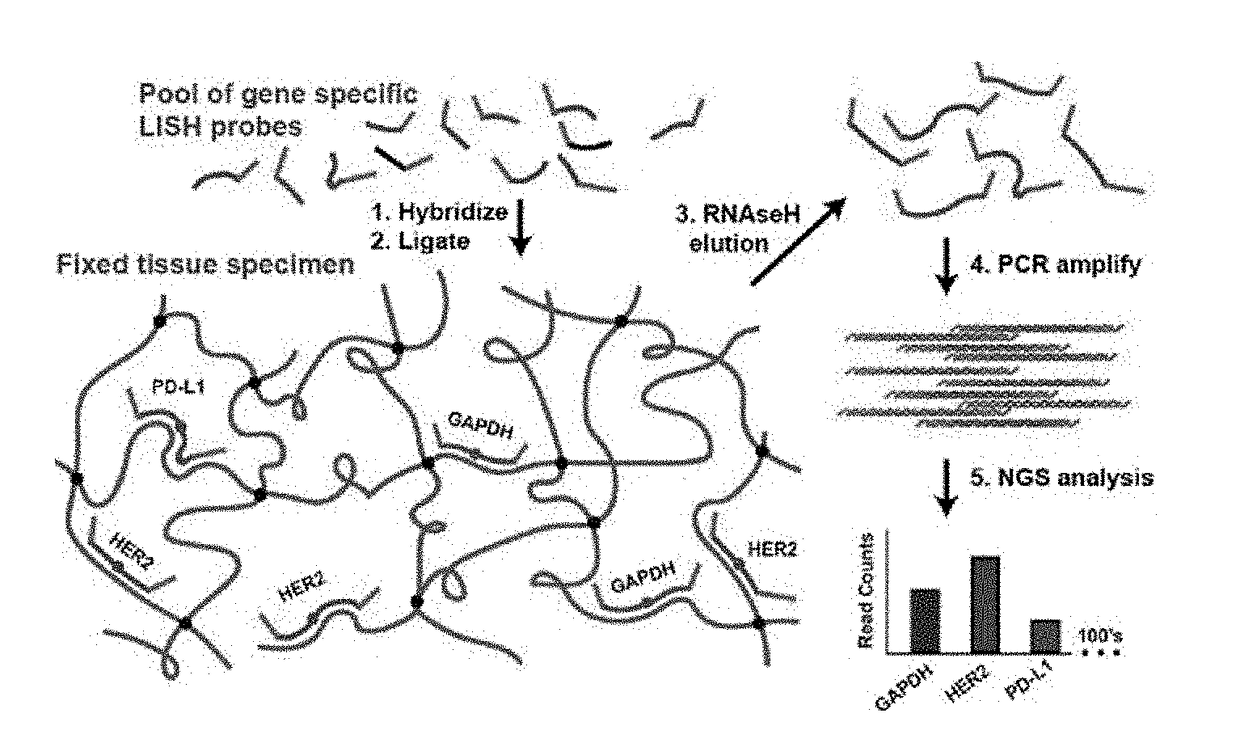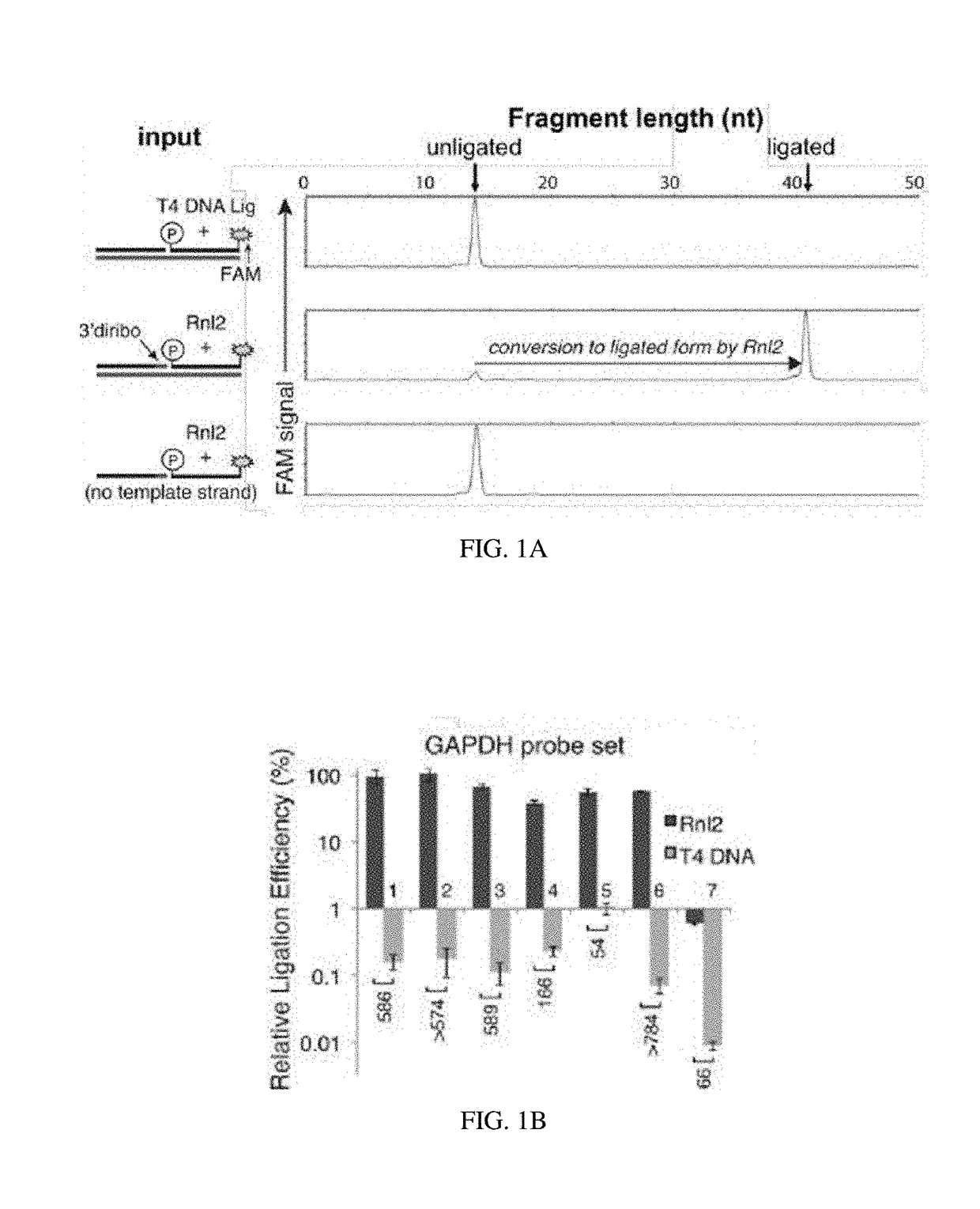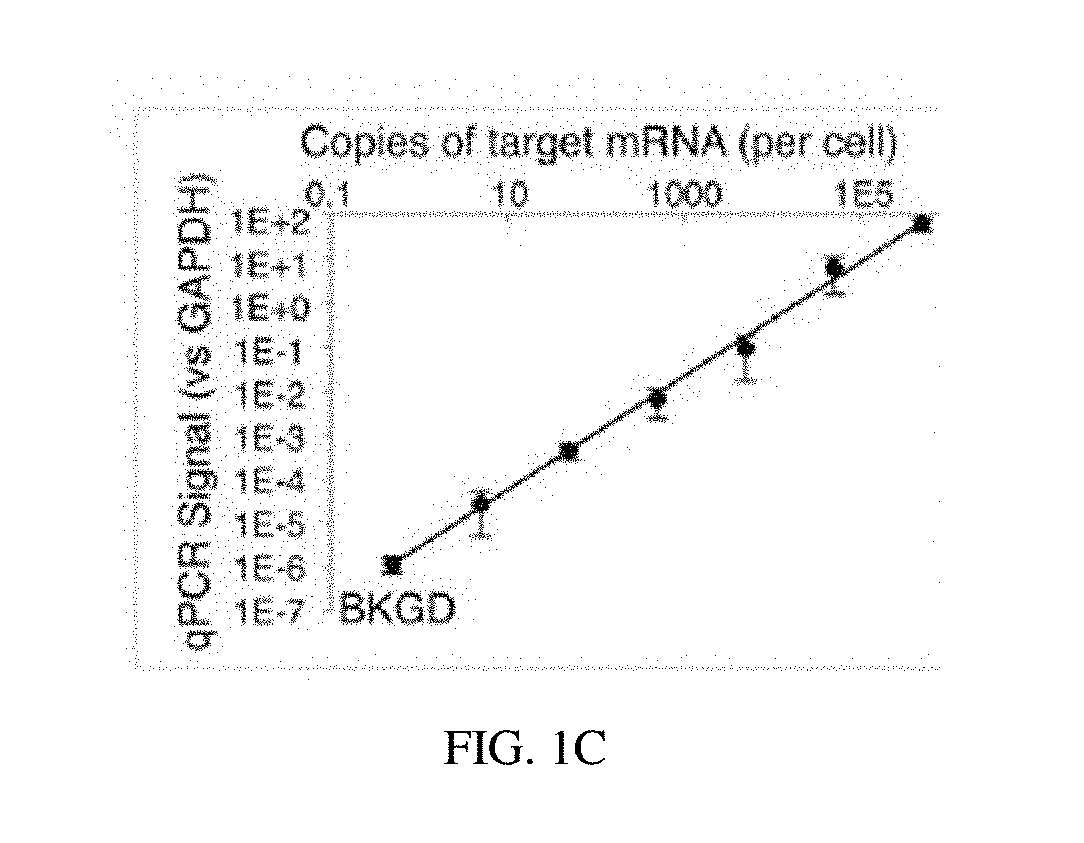Compositions and methods of RNA analysis
- Summary
- Abstract
- Description
- Claims
- Application Information
AI Technical Summary
Benefits of technology
Problems solved by technology
Method used
Image
Examples
example 1
Development of Ligation In Situ Hybridization Sequencing (LISH-seq)
[0100]An optimal protocol for efficiently producing probe ligation product in FFPE sections is determined. Housekeeping gene probe sets are employed to explore the impact of various protocol parameters on the signal (on-target probe ligation) and noise (off-target probe ligation) of the assay. The performance of LISH is assessed by direct comparison with RT-qPCR. High throughput DNA sequencing of mixed LISH products (“LISH-seq”) demonstrates the degree of multiplexing that the system provides (e.g., 100's to 1,000's of transcripts per tissue section). A collection of specimens stored for increasing periods of time is analyzed by LISH-seq. This dataset reveals the extent to which LISH-seq unlocks the vast archives of patient tumor specimens for highly multiplexed mRNA analyses. A strategy using LISH-seq to overcome previous limitations associated with the analysis of RNA extracted from microdissected tissues and small...
example 2
Maintaining Spatial Resolution of Amplified LISH product: LISH-stAmp
[0122]The value of multiplexed gene expression analysis is greatly enhanced if the spatial distribution of the transcript levels is preserved. Such a technology is particularly useful for characterizing the complex interactions between tumor tissues and the cells of the immune system. A platform enabling the highly multiplexed, spatially resolved analysis of gene expression in FFPE tissue sections is transformative for both cancer researchers and pathologists.
[0123]The utility of LISH is expanded to a method to stamp and Amplify LISH product on a target surface (“LISH-stAmp”) to preserve spatial information. This effort builds upon stamping DNA molecules to replicate high-density DNA microarrays. To locally amplify the stamped LISH product, bridge PCR is used, which has been described in the literature and is the foundation of Illumina's high throughput DNA sequencing technology. After defining the LISH-stAmp protoc...
example 3
Measurement of RNA Sequences in FFPE
[0138]A recent report has demonstrated RNA-templated probe ligation chemistry that is sensitive, specific, and suitable for massively multiplexed analyses (Larman, H. B., et al. Nucleic Acids Research 42, 9146-9157 (2014), incorporated herein by reference in its entirety). The approach utilizes T4 RNA Ligase 2 (Rnl2), which ligates sequence-specific oligonucleotide probe sets annealed adjacently on an RNA “splint”. In this setting, Rn12 requires that the acceptor oligo is 3′-terminated with two ribonucleotides (here termed a “3′-diribo probe”). In some examples, the acceptor oligo may have a 3′ termination of at least two RNA bases. The phosphorylated donor probe (here termed a “5′-phospho probe”) can be fully DNA (FIG. 5A). The ligated 3′-diribo and 5′-phospho probe set is thus a DNA molecule that contains an internal diribonucleotide sequence.
[0139]There is no known DNA ligase that exhibits a preference for RNA versus DNA splints, and even Rnl2 ...
PUM
| Property | Measurement | Unit |
|---|---|---|
| Length | aaaaa | aaaaa |
| Composition | aaaaa | aaaaa |
Abstract
Description
Claims
Application Information
 Login to View More
Login to View More - R&D
- Intellectual Property
- Life Sciences
- Materials
- Tech Scout
- Unparalleled Data Quality
- Higher Quality Content
- 60% Fewer Hallucinations
Browse by: Latest US Patents, China's latest patents, Technical Efficacy Thesaurus, Application Domain, Technology Topic, Popular Technical Reports.
© 2025 PatSnap. All rights reserved.Legal|Privacy policy|Modern Slavery Act Transparency Statement|Sitemap|About US| Contact US: help@patsnap.com



